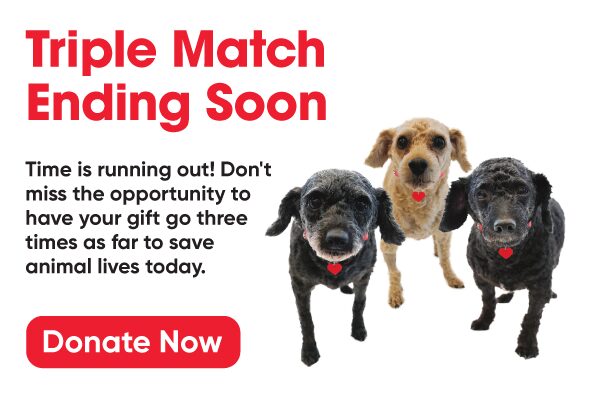Preparing Your Dog for Post-COVID Life
COVID Life and Pets
We’re sure you’ve seen the endless social media memes suggesting that dogs are getting just a little bit annoyed at the fact that their humans have stopped going off to work every day. Dogs generally like it when their family is together, and most dog owners believe that they really don’t like being left alone. At least, until this pandemic hit.
Now, we never leave, and while we might think that they would love all this together time, we can tell you one thing for sure: it is stressful for them.
Have you ever heard the old adage, “Be careful what you wish for, because you just might get it?”
Stress
This pandemic has us humans pretty worked up. With the economic uncertainty, isolation, lack of work for some and exhausting excess of work for others, and worries of contracting a disease that can be fatal, we are largely in a state of mild panic at least some of the time. But why would us being home to spend oodles of time with our furry companions be stressful for them? One would assume they would love it.
The reason it is stressful is because it’s not normal or routine, and our stress trickles down to our pets, who are incredibly in tune with us and our emotions.
Routine and Consistency
Dogs thrive on routine and consistency. Your dog may not have seemed happy when you would leave for work each day, and he probably did miss you, but it was at least a routine. Once he figured it out, he could adjust to it and go with the flow. This state we are in right now is not routine, and we are not behaving like we used to. Many of our pets are showing their stress through behaviors that may have been present but went largely unnoticed or have just cropped up because of this unexpected situation.
Separation Anxiety
Behavior issues that you may be witnessing now will pale in comparison to the behavior problems many dog owners will deal with when life returns to normal. Many dogs will suffer from some manner of separation anxiety when the pandemic ends. Some will have it worse than others, and dogs who were already suffering from it to some degree will likely have it the worst. It’s going to be a gigantic change and is probably going to happen quickly, which is never helpful for pets who thrive on consistency and routine.
There is hope, though. There are things you can do now that will help your dog with the changes in your schedule and, frankly, you owe it to your dog to start doing these things now. It’s your job to meet your dog’s needs, and he needs your help with preparation.
Steps to prevent separation anxiety
Crate Your Dog
Crate your dog at least 3-4 hours a day, 5 days a week, starting now. Yes, even while you are home. You can break it up into a morning session and an afternoon session so that it’s 30 minutes here and one and a half hours there. Just start doing it. Nighttime doesn’t count in these 4 hours; this is meant to be extra crate time during the day.
Reward your dog when he enters the crate and ignore any noise he makes while he is in there. Do not look at him, talk to him, approach the crate, or release him from it unless he is silent and semi-calm. When you do release him, act neutral. Coming out of confinement is already rewarding. You don’t need to add excitement to it. If he barks, leave the room. When he stops, return.
If your dog isn’t crate-trained, he needs to be confined, away from attention, in a safe place where he cannot cause destruction. Crates are best, but something is better than nothing.
Ignore Your Dog
Ignore your dog in general more than you are currently doing now. If he is prone to following you everywhere, ignore him. Just because he wants to constantly be in the room with you doesn’t mean you have to pay attention to him. When you do pay attention to him, he should be sitting or lying down, quietly, maybe chewing a bone.
Do not reward his demands for attention, which often look like barking at you, pawing at you, or shoving his head between your face and your phone.
Follow Your Routine
Make sure your dog is on a routine for eating, pottying, being confined, playing, training, walking, and sleeping. Routines are like balms. Dogs and humans thrive on them. Your routine when life resumes to normal might look different than the routine you set up now, but that’s OK. You can adjust when that gets closer.
Teach Relaxation
Teach your dog to relax on cue. You can do a web search to find different ways to do this, and it will help both of you to be calmer and happier.
Practice Alone Time
Practice leaving the house for short absences. Go to the grocery store, take a short walk, go for a drive, or simply work outside in your backyard without your dog.
Provide Daily Enrichment
Daily enrichment can benefit your dog by reducing stress and increasing confidence.
![]()
Put Away the Bowl
Take advantage of mealtime and challenge your dog to use food-dispensing toys.
![]()
Give Your Dog Enrichment
Provide opportunities to sniff, chase, chew, and dig! Select toys and games that allow them to express these behaviors.
![]()
Training Time Isn’t Just for Obedience
Provide a cognitive challenge that will benefit your dog’s mental health and improve the bond between you two.
![]()
Adventure Time
Take your dog walking on a new route and focus on allowing them to sniff all the unfamiliar scents.

